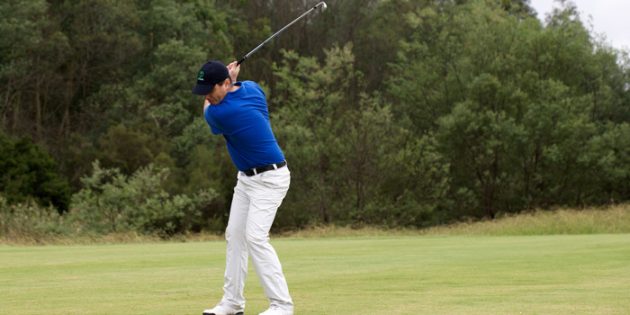Ever since being involved in a major biomechancal study into the golf swing and creating a simpler (but) accurate swing model, I’ve spent many hours perfecting the coaching process.
One of the highlights of the study was getting to hang out with really smart sport scientists. They were complete geeks and when I got them to the bar and got some beer into them, they really opened up and shared their thoughts.
They said breakthroughs in golf were unlikely to come from more information and data, but rather, better ways of coaching what we already know. I found this surprising seeing they were research scientists but they said it was just too easy to get carried away with all the mumbo jumbo. They encouraged me to continue with my mission, to find better and simpler ways of getting the message understood.
So here are four keys principles on how to fix your golf swing (or at least make sure the improvement process is as stress free as possible).
Point #1: Don’t try and incorporate every bit of instruction at once. Doing so overloads your brain and makes learning (therefore improvement) impossible. I’ve always liked to get one or two principles locked down and then head outside and swing the club. It’s just too hard to take in any more information than this and get results.
Far too many of us golfers think we can bombard our system with lots of instruction and still be able to play. We can’t.
For example – if your coach has you working on your backswing, spend some time doing that. Don’t try and fix your backswing, your pivot, rotation and your downswing all at once. Arghhh! It’s just too hard.
Point #2: When you head to the golf course focus on playing the game. Golf instruction tends to bamboozle you with lots of technical advice – but golf is way more enjoyable when you can forget about your swing and hit the ball. In fact, my research has shown when you leave the swing alone, you’ll be able to more quickly integrate changes. This is something that many golfers just don’t appreciate. They’re always working and tweaking when the best recipe is to leave things alone.
Point #3: This is related to #2. Practice away from the golf course. You will get the best results if you work on your swing away from the golf course. I think the best place for all of this is at home, in the garage or backyard. If you can set up a net at home and hit balls a few times per week you’ll become dangerous in no time.
This way you’re not getting distracted with ball flight and all the other things going on around you. If you haven’t got room for a net then simply swinging a golf club and feeling your swing is every bit as good. This is some of the best training you can do and it only needs to take a few minutes per week.
Point #4: If you ever get stuck or bogged down then chances are you’re thinking too much and over analysing. Stop, relax and focus on hitting the ball towards a clear target. Learning takes place at the unconscious level and sometimes it’s best to forget about technique and just hit the ball.
I call this playing golf and we should all do more of this. Ultimately, golfers want to shoot lower scores and have more fun. And real enjoyment comes when you allow yourself to do this.
So you’ve got to train yourself to PLAY GOLF. Don’t take this for granted. Pick a target, relax and swing freely. Then repeat. This is how you can fix your golf swing swing while still enjoying the thrill of playing golf. It’s a powerful one-two punch that certainly beats the grind of continually being in fix-it mode.
If you want to learn more about the scientific swing model and how you can improve your golf swing you can click here.

Leave A Response